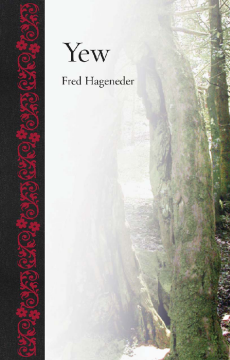
Additional Information
Book Details
Abstract
The yew is the oldest and most common tree in the world, but it is a plant of puzzling contradictions: it is a conifer with juicy scarlet berries, but no cones; deer can feast on its poisonous foliage, but it is lethal to farm animals; and it thrives where other plants cannot because of its extraordinarily low rate of photosynthesis. Exploring this paradoxical plant in Yew, Fred Hageneder surveys its position in religious and cultural history, its role in the creation of the British Empire, and its place in modern medicine.
Hageneder explains the way the yew is able to renew itself from the inside by producing interior roots and how early humans, fascinated with its regenerative powers, began to associate the tree with concepts of life and death, the afterlife, and eternity. As such, it can be found at the sacred sites of Native Americans, Buddhists, and Shinto shrines in Japan, and it has become a living symbol of the resurrection for the Christian faith. He describes how churchyards saved many yews during the Middle Ages, when the trees were used for the mass production of the longbow, which laid the foundation for the British Empire. Finally, he discusses the latest scientific discoveries about the yew, including its use in cancer treatments. A comprehensive and richly illustrated history, Yew will appeal to botanists and other readers interested in the history and symbolism of the natural world.
“Yew is the most compact, knowledgeable and enjoyable book that I have ever come across on our long relationship with these wonderful long-lived trees. No matter how much you already know about yews there will be many new nuggets of information within that will enthrall, entice and educate.”
— Peter Thomas, Keele University, UK
“If there is one tree that has stood still, witnessing the human civilization unfold, that is yew. Fred Hageneder’s Yew is a kaleidoscope that elegantly reveals the multifaceted and colourful nature of this marvellous tree, right from its microscopic anatomy, its geographical distribution, its historical legacy all the way through to its artistic expression, its sacredness and its conservation status. Delightfully illustrated and meticulously referenced, Yew is a must-have for everyone inspired by this magnificent tree.”
— Shonil Bhagwat, University of Oxford
“Yew presents the history of this tree in a clear and enthralling way as well as exemplary from the scientific point of view. It will contribute to make yew, a species of great scientific importance, known not only to experts but to a greater public. Yew is considered essential for the study on the evolution of gymnospermae; it is regarded with great interest in modern medicine for its practical utility; it has an extraordinary cultural appeal because, more than other species, yew accompanied human events since prehistory. Nevertheless, yew trees are at risk of extinction in a number of countries. Hageneder’s work can contribute to their conservation and I wish the book the success it deserves.”
— Bartolomeo Schirone, University of Tuscia, Italy
“It is tempting to say that Fred Hageneder knows all there is to know about this species, but what he knows best of all is that there is still much to learn about the yew. It is that air of mystery that gives this well-paced and beautifully illustrated book its fascination.”
— Times Literary Supplement
“This book is a real treasure trove of information about why the British yew is so important to nature, as well as socially, politically, and culturally. Hageneder divulges the latest scientific discoveries about this fascinating and longest-lived of our country’s trees—some individuals are estimated to be over 3,000 years old—and discusses its regenerative powers.”
— BBC Wildlife
Fred Hageneder is the author of many books on the natural and cultural history of trees, including Yew—A History. He lives in the Cotswolds, UK.
